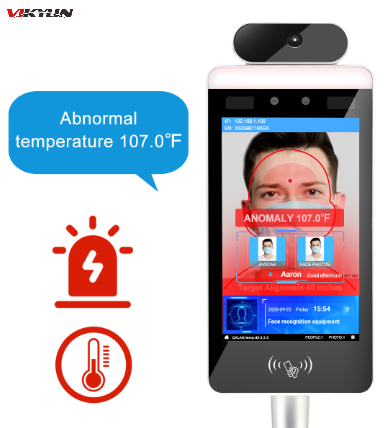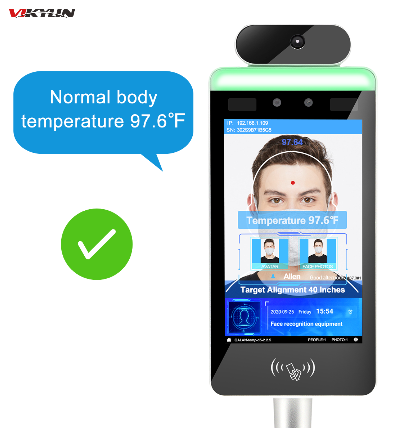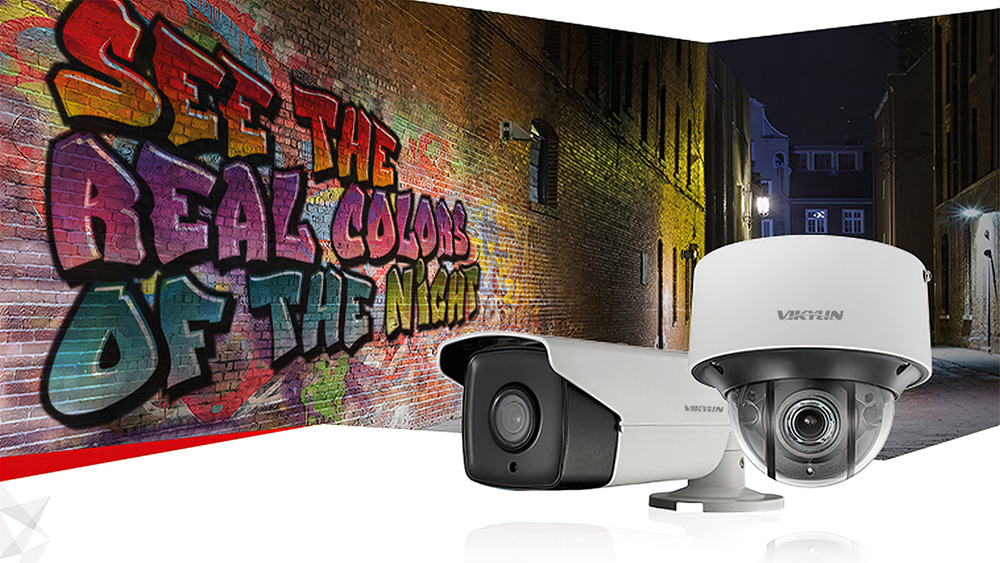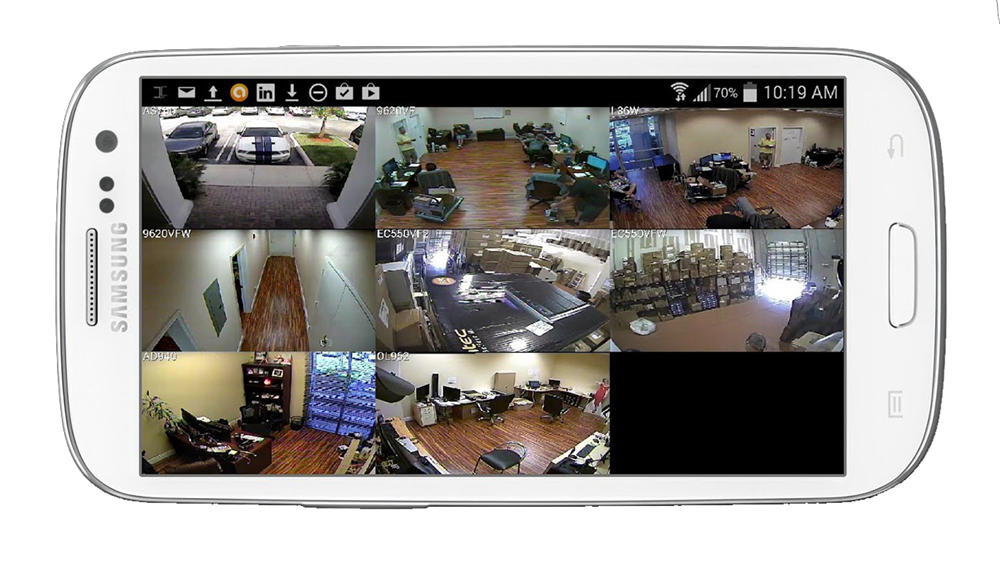
Automatic Infrared Body Temperature Thermal Scanner
Drastic times call for equally extreme measures, and the COVID-19 pandemic has made that perfectly clear. Several months ago, you could freely walk into your workplace, high five your co-workers, and even hug your work pals.
This is an old narrative; the unwarranted pandemic came to kill human contact and limit your interactions. However, it is almost impossible to destroy the human connection, and wireless non-contact automatic body thermal temperature scanners came in handy to uplift this aspect of humanity.
With fevers being an outstanding symptom of the virus, corporate entities and other organizations can harness these scanners’ power to significantly tell who should stay home and quarantine accordingly or seek medical help.
But what exactly is an automated infrared body thermal temperature scanner, and how does it work? Follow along—we’re about to give you the scoop!
What Is An Automated Thermal Temperature Scanner?
An automated thermal temperature scanner is a device that automatically reads a person’s temperature to determine if it’s elevated—signifying a fever.
The device is placed around the eye level of an individual. Using infrared sensing, it can assess their current body temperature without any contact whatsoever.
If the readings are normal, the individual can then access the public area of their choosing. However, in the event of a high-temperature detection, the scanner sounds an alarm or notification.
How Does An Automated Thermal Temperature Scanner Work?
So, how does this machine work? Contactless temperature scanners use advanced thermal imaging to detect infrared rays emitted by an individual’s body. The rays indicate a person’s body heat, which the scanners can convert into readable temperature measurements.
A typical body temperature range is between 97°F and 99°F. If your temperature screening exceeds this range, an alert is sent to the system administrator.
High temperatures are an indication of a fever, which is among the most outright COVID-19 symptoms. Most companies have adopted the policy of sending individuals with abnormal temperatures back home until the fever diminishes.
What Are The Features of An Automated And Contactless Scanner?
A contactless thermal scanner comes with some outstanding features that enhance its operations while reducing contact as much as possible. Some of these features include:
- Strategic Positioning: The scanners harness the power of artificial intelligence (AI) to dictate the correct standing position for an individual during temperature taking. If you stand too close or too far away, the scanner will instruct you accordingly.
- Accurate Results: Most of these scanners are very accurate and provide temperatures within a 0.30F range. Hence, the technology behind their working has been successfully used in the aviation field and proven to be remarkably accurate. To learn about one of the most accurate and efficient scanners, click here.
- Quick Response Time: These scanners take readings quickly so that there’s no waiting around or congregating in the mornings when your employees are clocking-in for work.
- Clear Alerts: No matter the outcome of your results, the scanners will display them and alert you through audible audio. Instructions to send you back home are also issued instantly.
- Record-keeping: The machines have in-depth data management systems that will store your reading files accordingly.

Wi-Fi Non-Contact Face Recognition & Temperature Measurement
What Are The Benefits of Automated Thermal Temperature Scanners?
The benefits of temperature scanners are almost invaluable. Among the most notable benefits are the following:
- Safety Enhancement: Restricting individuals’ entry with abnormal temperature readings has gone a long way to prevent the spread of the Coronavirus and other harmful germs. A temperature scanner is a preventative measure to take when trying to comply with health guidelines to re-open our businesses.
- Minimizing Obstructive And Invasive Practices: Traditional temperature checks and screening systems are a thing of the past. The sight of a temperature gun pointed at your forehead also feels a tad invasive. We’re required to keep a social distance of six feet from one another, which is impossible to do using a standard thermometer. An automatic system like a display-based scanner, for instance, is friendlier and may feel like a routine for required users. Even better, there are no unwarranted gatherings at entry points because of slow-moving in-person thermometer readings.
- Reduced Human Contact: As I mentioned above, reducing and eliminating contact is among the most outstanding features and benefits of automated thermal scanners. There is no need for a supervisor or another employee to take your temperature, which may spread whatever germ or virus one of you might be carrying.
- Saves On Labor: With fully automated scanning systems, there is no need for an on-site supervisor or employee. The systems are fully automated to operate on their own without physical manning.
Where to Install A Thermal Temperature Scanner?
If you’re a small business (SMB) owner wondering whether you can install an automatic temperature scanner at your premises—the answer is yes! However, if you’re unfamiliar with new technology, you may want your technology solutions provider to provide you with an initial installation.
Partnering with a knowledgeable and experienced team of experts allows you to focus on your daily tasks while a qualified professional gets your scanner up and running.
When it comes to the scanner’s location, it’s best to place it at one or more of your entry points—such as near your reception area or any doors employees use to enter your building.
What Are Some of The Best Practices of Using Thermal Temperature Scanners?
Although it is easier to use an infrared scanner for measuring body temperature, you should keep certain things in mind and follow them religiously.
- Do not install the scanner in a space that gets direct sunlight or an overheated one. It can lead to internal damages that are irreplaceable at times. Ideally, the temperature of the environment should be somewhere between 60 and 104 F with less than 85% humidity in the atmosphere.
- Place your fist a little distance away from the scanner. There is no reason to touch it to improve its accuracy. There is also no evidence backing this myth, so it should be removed.
- It is best if you can keep the device to yourself after installation and allow it to get adjusted to the environment for about 30 minutes.
- The NCITs are sensitive to water, or any other liquid. Be careful not to touch them with moist hands and sanitize them after you are done.
- The sleeves should be pushed up, and there should be nothing on the area of your body the readings will be taken from. So make sure you uncover your fist or wrist properly before putting it under the scanner.
Now that you have an idea about how to use the NCITs, you should think of ways to hasten the fever scanning process. One way to do that is by putting the device on a portable stand so that you can move it anywhere.
The Final Say About Automated Thermal Temperature Scanners
Thermal scanning is becoming quite a necessity in almost any premises that attracts the public. With the novel pandemic still wreaking havoc left and right, this machine is your best bet to staying safe while keeping your business operations running.
As businesses continue to reopen, an automated and thermal temperature scanner comes in handy as your first line of defense for a safe workplace and healthy employees.
To learn more about a temperature scanner for your business, or any of the products and services we offer, reach out to us today. We’re here to give you peace of mind to help you win more business.


